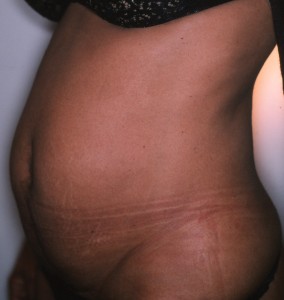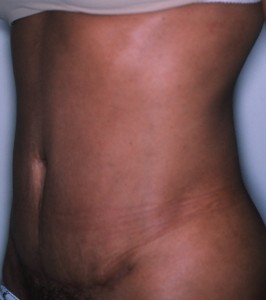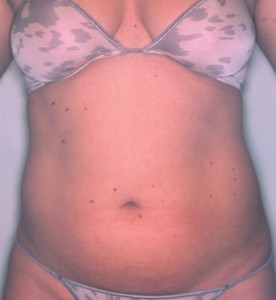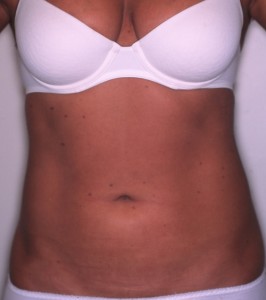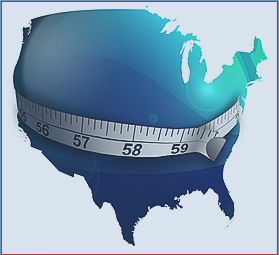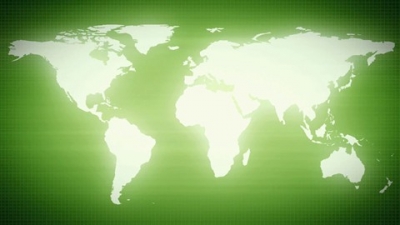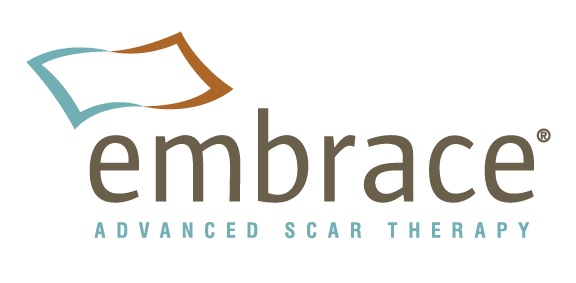Extra fat or loose skin around the abdominal area can be a persistent problem that does not respond to diet or exercise. When combined with muscle weakness after pregnancy or weight loss, surgery may be the most effective solution to improving the appearance of your tummy. Two procedures to consider are liposuction or abdominoplasty (tummy tuck). Here, we discuss which one may be right for you.
Abdominoplasty
Many factors can affect the contour of your abdomen. Excess fat deposits can produce undesirable bulges or fullness. Childbirth can stretch abdominal muscles to an extent uncorrectable with exercise. Loose skin following childbirth or weight loss can result in an unattractive surface appearance of the abdomen.
Abdominoplasty, known as a tummy tuck, is a procedure that improves the contour and appearance of the abdomen by tightening or reshaping the underlying muscle framework and removing excess fat and loose skin. If fat deposits are the only contour problem, they may be correctable with liposuction alone. Muscle that shifts laterally as a result of pregnancy will remain there and creates a weakness that prevents you from attaining a flat tummy. It cannot be returned to its proper midline position with exercise. After significant weight loss, your abdominal skin may become much looser, and sometimes actually hang downward, creating a pleating effect. Skin does not respond to any type of exercise, and similar to stretched muscle, will require a tummy tuck to remove the excess. How much your abdomen can be reshaped depends on several factors. The quality of your tissues is very important and is variable amongst patients. If you are significantly overweight, you’ll get a much better correction if you achieve a more ideal weight before your tummy tuck. To reshape the underlying muscle-based support framework and remove excess skin, incisions are necessary. The length of the incision placed just above the pubis depends on the amount of loose skin correction you require. Any necessary incisions will produce scars. The quality of these scars depends on several factors including your specific healing characteristics. However, most patients view the scars as a worthwhile trade-off for the significant improvement that can be achieved in the shape of the abdomen.
Age, heredity, and hormonal factors can sometimes counteract our best efforts to attain the type of physical appearance we desire. Even in individuals who are not overweight, localized deposits of fat can occur in areas of the abdomen, producing undesirable contours. Liposuction alone can be used to treat the fat when muscle and loose skin are not contributing to the problematic appearance.
Careful assessment prior to the procedure will determine if this is the right procedure for you. First, you must look at your skin. If it does not hang and it snaps back when pinched then you can expect it to contract well after fat removal. When you inhale and tighten your abs, you will be able to determine the contribution made by the fat under your skin to the bulging of your tummy. When you exhale, the added prominence that results is due to muscle laxity. The difference between the two is what can be treated with liposuction.
Small incisions are used to insert narrow tubes or cannulas to suction away the unwanted fat. Remember, liposuction is not designed as a weight reduction procedure, but as a technique to blend body outlines more aesthetically. Surgery needs to be combined with a program of fitness and nutrition to achieve and maintain long lasting results.
During your consultation, Dr. Forley will advise you as to the best treatment options to enable you to achieve the appearance that you desire.
Tags: Abdominoplasty, Body Contouring, body shaping, liposuction, Tummy tuck
Written by Dr. Forley on January 29, 2012

